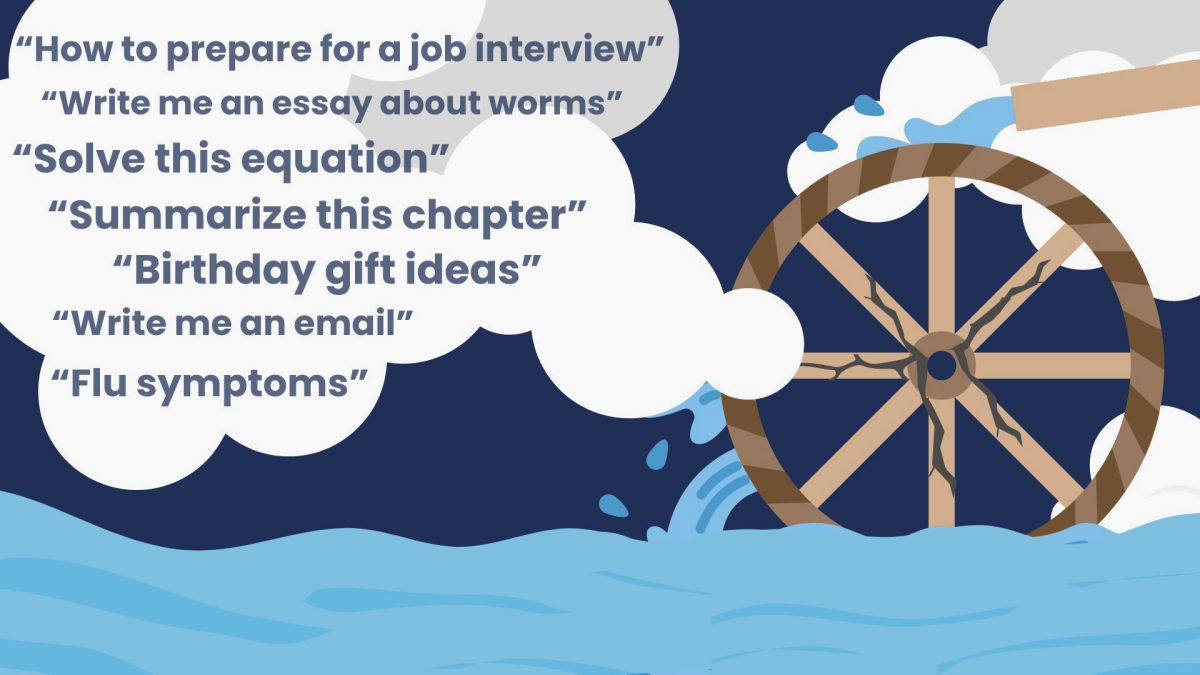I do it all at the push of a button — change the temperature in a room, lock the front door and check the cameras outside of the house. These simplified tasks are seemingly harmless, and making a smart home makes for a safe and accessible lifestyle.
But the button has grown to encompass more than just turning something on and off. With a button you can now write an essay, a grocery list, find answers to your exams and mimic voices and images. Every Google search you make is accompanied by Gemini, an AI function that you can not turn off.
The relationship between humans and the developing technology of AI can never be considered outright harmless. There are always going to be people who will argue for and against AI usage, whether it be for technological advancement or job displacement, and employees, scientists and researchers all have voices to advocate for themselves.
However, there is little talk about the environment, even as Artificial Intelligence is consuming energy and water.
In order for AI to complete a task, data centers must be built to hold the computers and microchips. These data centers use massive amounts of water during construction and, once operational, use more water to cool down the electrical components. After the completion of the data centers, the computers must be trained in order to answer questions.
Microsoft pumped in about 11.5 million gallons of water in July of 2022 in order for OpenAI to train GPT-4 and cool the West Des Moines data centers —water that had been pulled from the Raccoon and Des Moines River watershed. A Microsoft executive said in a speech that GPT-4 “was literally made next to cornfields west of Des Moines.”
The Washington Post and the University of California, Riverside worked together in a study to determine water usage levels from ChatGPT. A 100-word email generated by an AI chatbot using GPT-4 uses 519 millimeters of water, or about the size of one water bottle. While this seems insignificant, creating this 100-word email once weekly for a year, by only one out of 10 working Americans, would use 435,235,476 liters of water. This is equal to all the water consumed by Rhode Island households for 1.5 days.
Most people are using ChatGPT for much more than a 100-word email once a week, so you can imagine the mounting scale of water usage.
If water usage is not considered and limited in future AI developments, the morality of these computers is tied to the health of the environment. While water seems plentiful on Earth, only 3% of it is fresh, and 2.5% of that freshwater is locked in glaciers and polar ice caps. The freshwater available is used for agriculture and industry needs as well as the needs of a growing global population.
Water scarcity can lead to economic disruption as water prices increase, water-borne diseases as clean water decreases and ecosystem degradation as wetlands, rivers and lakes lose water.
While it’s tempting to aid your work and assignments with ChatGPT’s answers, take the time to crack open a textbook and look for the answer.
The Earth is sick, and AI is not medicine. It is a disease.







